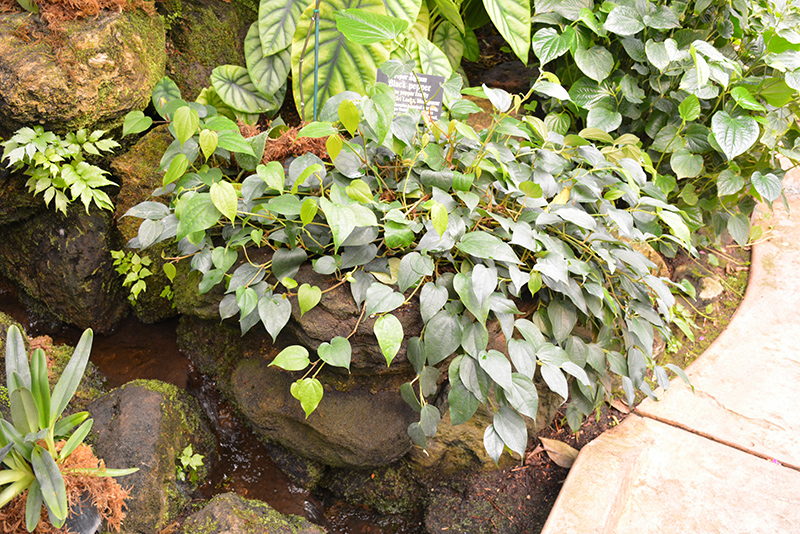Black Peppercorn
Description
This climbing variety showcases long vigorous vines with shiny dark green, almond shaped leaves; producing long cylindrical clusters of small fruit, emerging green and then dried to black; wonderful in containers or hanging baskets; requires trellising
Planting & Growing
Black Peppercorn will grow to be about 13 feet tall at maturity, with a spread of 10 feet. As a climbing vine, it should be planted next to a fence, trellis or other rigid structure where it can be trained to grow upwards on it. The stalks can be weak and so it may require staking in exposed sites or excessively rich soils. It grows at a medium rate, and under ideal conditions can be expected to live for approximately 10 years. As an evegreen perennial, this plant will typically keep its form and foliage year-round.
This plant is typically grown in a designated edibles garden. It should be grown in a location with partial shade or which is shaded from the hot afternoon sun. It requires an evenly moist well-drained soil for optimal growth. It is not particular as to soil type or pH. It is somewhat tolerant of urban pollution. Consider applying a thick mulch around the root zone over the growing season to conserve soil moisture. This species is not originally from North America. It can be propagated by division.
Black Peppercorn is a good choice for the edible garden, but it is also well-suited for use in outdoor containers and hanging baskets. Because of its spreading habit of growth, it is ideally suited for use as a 'spiller' in the 'spiller-thriller-filler' container combination; plant it near the edges where it can spill gracefully over the pot. It is even sizeable enough that it can be grown alone in a suitable container. Note that when growing plants in outdoor containers and baskets, they may require more frequent waterings than they would in the yard or garden. Be aware that in our climate, this plant may be too tender to survive the winter if left outdoors in a container. Contact our experts for more information on how to protect it over the winter months.

